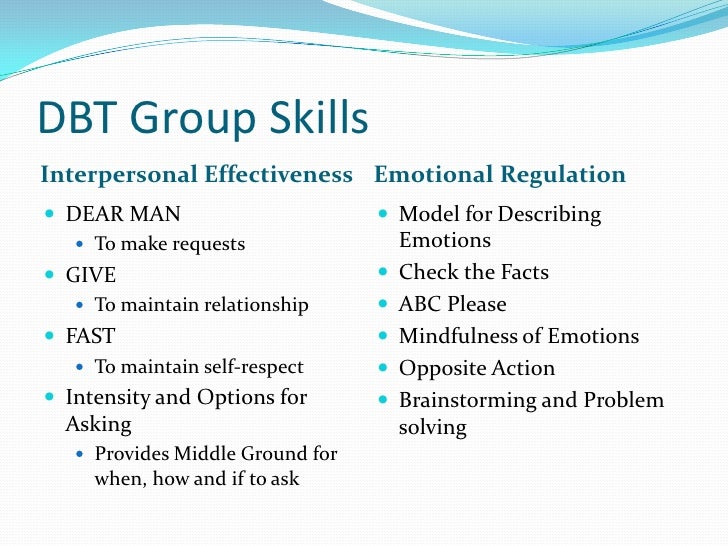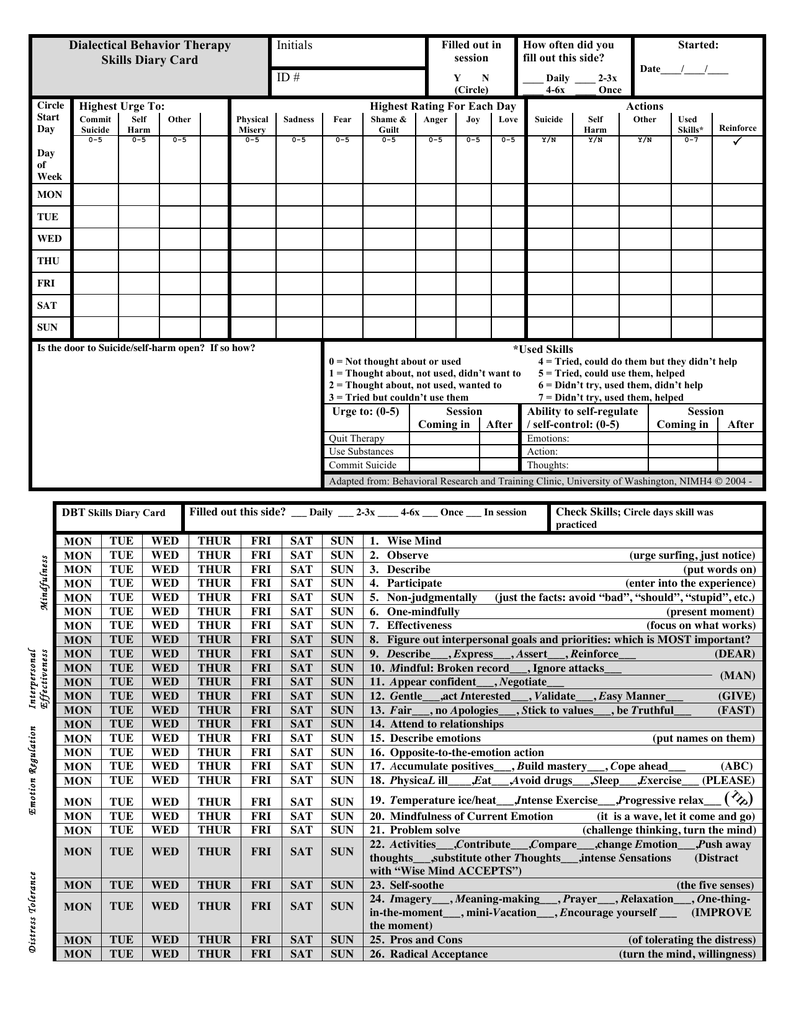Using Abc Please Skillsdialectical Behavioral Training
Nov 08, 2017 One of the most effective skills that we have within our field is Behavior Skills Training. This can be used to help train and teach technicians as well as parents throughout ABA therapy to get the effective results from our programs and interventions. The people you hire have to be able to use their interpersonal skills in different settings while working in tandem with other individuals. Here are seven behavioral or interpersonal skills that you should zero in on when establishing the culture in your company: 1.
By Zainab Fazal, M.ADS, BCBA
bSci21 Contributing Writer
On June 22, 2015, I received a phone call from a staff at a local residential home serving adults with developmental disabilities. With a lot of excitement, she asked if I watched NBC Dateline the night before. Before I could answer, in even more excitement, she said, “that guy did that strategy you were talking about in class!”
Let me give you a little insight into what she was talking about. She was referring to the segment on NBC Dateline called “My kid would never do that: gun safety”, and the guy was Dr. Raymond Miltenberger.You can check out the segment here.
If you teach anyone, anything, behavior analysis has a secret to share with you. It’s the strategy the staff was talking about – Behavior Skills Training (BST). It is a method to teach students, staff, parents, and anyone else you are teaching a new skill. Dr. Miltenberger defines BST as “a procedure consisting of instruction, modeling, behavioral rehearsal, and feedback that is used to teach new behaviors or skills” (2004, p. 558). And that’s exactly what it is, a 4-step teaching strategy that works!

BST teaches a person what to do — that is, what behaviors to engage in under a particular circumstance.It allows for practice within the program so that the person can become fluent with the skills.It is an effective train-the-trainer procedure. And perhaps most importantly, can be individualized to each person. Sounds pretty good, doesn’t it?
Let’s break down each of the steps:
Instruction – Provide a description of the skill, its importance or rationale, and when and when not to use the skill. Repeat this step as necessary.
Modeling – Show your participant how to perform the skill. In-vivo modeling is recommended.
Rehearsal – Practice, practice, and practice! Allow the participant opportunities to practice the skill. Recent research suggests that participants should be able to practice in-situ. The trainer should record data on correct and incorrect responding during this step.

Feedback – The trainer should provide positive praise for correct responding and some form of corrective feedback for incorrect responses.
Some requirements before you can implement a BST program include: the person receiving the training must have the pre-requisite skills required for the behaviors you are teaching, the skill must include a chain of behaviors (a number of skills), and you must be able to role-play or video model the skills.
In a Registered Behavior Technician training course I was providing, I used BST to teach various skills to participants. Any skill I was teaching that met the afore-mentioned requirements I taught using BST. Based on the feedback forms from eight cohorts, participants reported that they enjoyed and learned the most when they got to practice the skills being taught, and got immediate feedback.
Here’s an example of how it was used in the training. The skill was implementing preference assessments with clients.
Instructions were provided on why preference assessments are done, when and with whom to do them, how to use the data sheet, the materials required, and how to complete the assessment.
I modeled completing a preference assessment, using one of the course participants as my “client.”
Participants paired up and practiced administering the preference assessment with their colleagues.Participants were able to practice the skill as each preference assessment included 30 trials!


I went to each group and provided feedback on what each person was doing correctly and incorrectly.
What have been your experiences with Behavior Skills Training? Let us know in the comments below. Also, be sure to subscribe to bSci21 via email to receive the latest articles directly to your inbox!
Recommended Readings:
Johnson, B.M., Miltenberger, R.G., Egemo-Helm, K., Jostad, C. J., Flessner, C., & Gatheridge, B. (2005). Evaluation of behavioural skills training for teaching abduction-prevention skills to young children. Journal of Applied Behavior Analysis, 38, 67-78.

Miles, N.I., & Wilder, D.A. (2009). The effects of behavioral skills trainingon caregiver implementation of guided compliance. Journal of Applied Behavior Analysis, 42(2), 405-410.
Miltenberger, R. (2004). Behaviour Modification: principals and procedure (3rd ed.) Belmont, CA. Wadsworth Publishing.
Miltenberger, R.G., Flessner, C., Batheridge, B., Johnson, B., Satterlund, M., & Egemo, K. (2004). Evaluation of behavioural skills training procedures to prevent gun play in children. Journal of Applied Behavior Analysis, 37, 513-516.
Steward, K.K., Carr, J.E., & LeBlanc, L.A. (2007). Evaluation of family-implemented behavioural skills training for teaching social skills to a child with asperger’s disorder. Clinical Case Studies, 6, 252-262.
Zainab Fazal, M.ADS, BCBA, began her career in the developmental disabilities field in 2002, and has dedicated her clinical work and research in the area of Applied Behaviour Analysis (ABA). She has worked for many years in assessing and developing comprehensive programs plans for children, youth, and adults with Autism Spectrum Disorders (ASD), learning disabilities, other developmental disabilities, behavioural challenges and mental health issues. Her recent work includes training front-line staff and teachers to use ABA in therapeutic and school settings, and has successfully trained individuals for the Registered Behaviour Technician credential with the Behaviour Analyst Certification Board. She is also an adjunct professor at Seneca College teaching ABA courses in the Behavioural Sciences program. Zainab is the founder and director of Phoenix Behaviour Services, a private practice in Toronto, Canada. You can follow her on twitter @Phoenix_ABA and reach her at zainab@pbxs.ca.
Goals of interpersonal effectiveness include getting people do meet your needs, getting them to do those things you want them to do, and to get others to take your opinions seriously. The aim is to strengthen current relationships, build new and satisfying relationships, and end those relationships that are unhealthy or toxic. It is important to create and maintain balance in relationships, and balance change with acceptance.
Dialectical Behavior Skills
Interpersonal skills are not naturally attained, they need to be learned. Emotions often get in the way of building healthy relationships. Sometimes our automatic negative thoughts about ourselves get in the way of finding new relationships.
The Skills
Dialectical Behavioral Therapy Pdf
It is important to clarify your goals and maintain your self-respect. DBT uses four skill building activities for clients to learn effective interpersonal skills:
